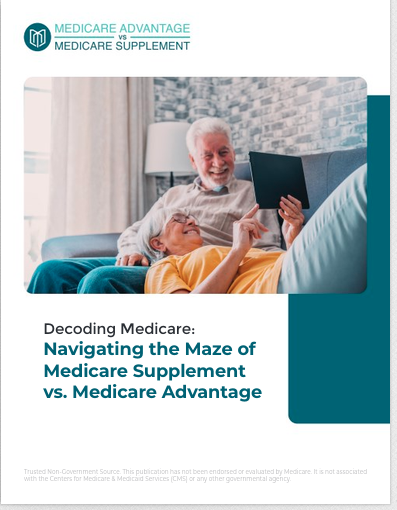Key Takeaways
-
Not understanding Medicare basics in 2025 could result in overwhelming out-of-pocket costs that derail your financial future.
-
Medicare has rules, timelines, and gaps you must proactively manage to avoid delays in coverage, penalties, or surprise bills.
Why Medicare Literacy Isn’t Optional Anymore
You might assume Medicare is automatic, simple, or similar to other health insurance you’ve had before. But that assumption can cost you. In 2025, with more complex plan options, penalties for late enrollment, and increasing healthcare costs, the stakes are higher than ever. If you treat Medicare like “just another insurance plan,” you risk missing critical protections it offers — or overpaying for services it doesn’t fully cover.
Knowing the structure, parts, enrollment periods, and common pitfalls of Medicare gives you a real chance to prevent financial shock later. A lack of preparation could lead to six-figure medical bills, particularly in emergencies, hospitalizations, or long-term treatment scenarios.
The Four Parts of Medicare — What They Actually Do
Medicare isn’t a single plan. It’s made up of different parts, each covering specific types of care:
Part A: Hospital Insurance
Part A generally covers:
-
Inpatient hospital care
-
Skilled nursing facility stays (short-term)
-
Hospice care
-
Limited home health care
If you or your spouse paid Medicare taxes for at least 40 quarters, you qualify for Part A premium-free. But that doesn’t mean it’s free overall. In 2025, there’s a $1,676 deductible for each benefit period. Extended stays come with daily coinsurance that adds up fast.
Part B: Medical Insurance
Part B covers outpatient care:
-
Doctor visits
-
Preventive services
-
Lab tests and X-rays
-
Durable medical equipment
-
Mental health services
The standard monthly premium for Part B in 2025 is $185, with an annual deductible of $257. Once you meet the deductible, you generally pay 20% of Medicare-approved services. Higher-income enrollees pay more through Income-Related Monthly Adjustment Amounts (IRMAA).
Part D: Prescription Drug Coverage
Part D helps pay for prescription drugs through private plans approved by Medicare. In 2025:
-
The maximum deductible is $590
-
After reaching $2,000 in out-of-pocket drug costs, you enter catastrophic coverage, where you pay nothing for covered drugs for the rest of the year
If you skip enrolling in Part D when first eligible and don’t have creditable drug coverage, you face a late enrollment penalty for life.
Medicare Advantage (Part C)
These are all-in-one alternatives to Original Medicare, offered by private companies. They include Part A, Part B, and often Part D. Many offer extras like dental, vision, or hearing benefits. But coverage rules, provider networks, and out-of-pocket costs can vary drastically from Original Medicare.
What Enrollment Deadlines You Can’t Miss
Initial Enrollment Period (IEP)
You have a 7-month window:
-
Starts 3 months before the month you turn 65
-
Includes your birth month
-
Ends 3 months after
Enroll late, and you may face:
-
Delayed coverage
-
Permanent Part B and Part D late penalties
General Enrollment Period (GEP)
Runs from January 1 to March 31 each year. If you missed your IEP, you can enroll here, but coverage won’t begin until July 1, and late penalties apply.
Special Enrollment Period (SEP)
If you delayed Medicare because you had employer coverage, you can enroll penalty-free within 8 months of losing that coverage.
Annual Open Enrollment (AEP)
From October 15 to December 7 each year, you can:
-
Switch between Original Medicare and Advantage
-
Change Part D plans
-
Drop drug coverage
Your changes take effect January 1.
The Penalties No One Warns You About
Failing to enroll in time comes with lasting consequences.
-
Part B Penalty: 10% for every 12 months you delayed enrollment without other coverage.
-
Part D Penalty: 1% of the national base premium for every month you delayed.
These penalties are added to your premiums every month for life.
Gaps in Original Medicare You Need to Plan For
Original Medicare doesn’t cover everything. In fact, many essential services are excluded:
-
Routine dental, vision, and hearing exams
-
Long-term custodial care
-
Overseas emergency care
-
Most prescription drugs (without Part D)
And even for services it does cover, cost-sharing can be high. For example:
-
20% coinsurance on outpatient services (no out-of-pocket max)
-
High hospital coinsurance after 60 days
To help manage this, many people consider:
-
Medicare Supplement Insurance (medigap) to help pay Original Medicare’s out-of-pocket costs
-
Medicare Advantage Plans for additional benefits, with network restrictions and cost differences
Medicare Doesn’t Automatically Know You Want It
Unless you already receive Social Security or Railroad Retirement Board benefits, you must actively enroll in Medicare. It’s not automatic. Missing that enrollment window because you assumed otherwise could cost you both coverage and money.
In 2025, more people are delaying retirement past age 65. If that’s you, make sure you know when your employer coverage ends and when your Medicare clock starts.
IRMAA: Income Affects Your Premiums
If your Modified Adjusted Gross Income (MAGI) from two years ago (2023 tax return) is above a set threshold ($106,000 individual / $212,000 joint), you pay higher premiums for:
-
Part B
-
Part D
These IRMAA amounts can increase your monthly cost significantly. You can request a reconsideration if your income has dropped due to a life event.
Why Waiting for an Emergency Is Too Late
Many of Medicare’s most important decisions need to be made before you get sick:
-
Will your doctor accept Medicare?
-
Does your hospital stay fall under Part A or Advantage?
-
Is your surgery outpatient or inpatient (which affects how it’s billed)?
-
Are your prescriptions included in your Part D plan?
Failing to get answers in advance could mean you’re responsible for thousands out of pocket. Some hospital stays can trigger bills that exceed $100,000 without coverage in place. Knowing your Medicare details now helps you avoid these surprises.
Planning Beyond Just Parts A and B
You might think Parts A and B are enough. But that often leaves you exposed. Planning beyond that can mean the difference between manageable expenses and financial hardship.
Questions to ask:
-
Do you take prescriptions daily? If yes, Part D is essential.
-
Do you travel frequently? Original Medicare won’t help abroad.
-
Do you prefer access to specialists without referrals? That leans toward Original Medicare with Medigap.
-
Do you want all-in-one simplicity and added benefits? That leans toward Advantage plans—but check networks and out-of-pocket maximums.
Healthcare Inflation Is Outpacing Retirement Budgets
In 2025, the cost of healthcare continues to rise faster than most retirement incomes. While Medicare helps, it doesn’t fully protect you. Here’s what remains on your shoulders:
-
Monthly premiums
-
Annual deductibles
-
Coinsurance and copays
-
Out-of-pocket maximums (if in Advantage)
-
Drug costs up to $2,000 (Part D cap)
Building a Medicare strategy means budgeting realistically for these costs year after year.
Choosing a Plan Without Guidance Is Risky
There are dozens of choices within Medicare. Plans vary widely by location, provider network, and covered services. Picking one without expert help often results in either:
-
Overpaying for coverage you won’t use
-
Ending up with gaps when you need care most
Working with a licensed agent can help you:
-
Understand trade-offs between coverage types
-
Match your health needs to plan options
-
Avoid permanent enrollment mistakes
Protecting Your Health and Finances Starts With Knowledge
The most basic Medicare knowledge—what each part covers, when to enroll, what’s not included—can save you from some of the most expensive mistakes in retirement. It’s not about memorizing every rule. It’s about understanding what matters for your life, your timeline, and your health needs.
Start now. Review your current coverage. Ask questions. Learn your eligibility dates. And when you’re ready to make decisions, get in touch with a licensed agent listed on this website who can help you sort through your options with clarity.










